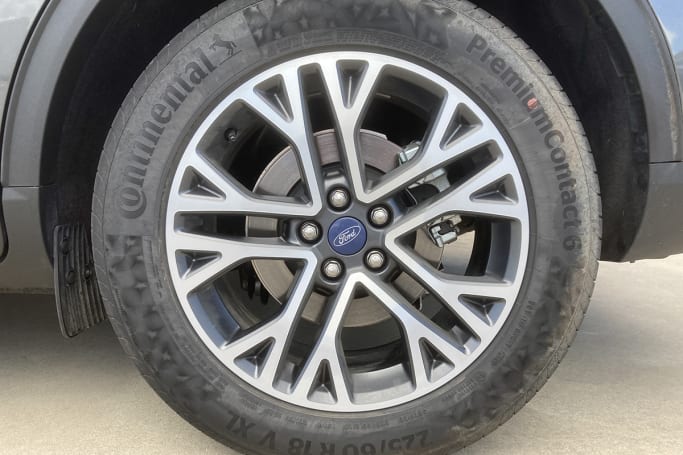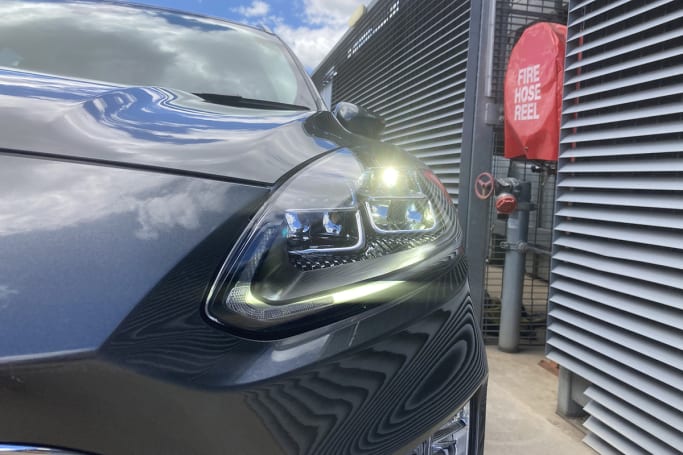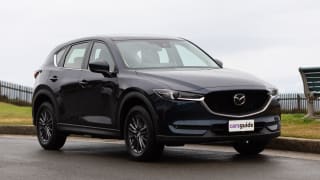Frankly, Ford's marketing baffles us.
Now known simply as 'Escape FWD', the entry-level ZH-series auto starts from $35,990 before on-road costs, and that's a hefty $5500 leap over the previous base ZG Ambiente FWD auto – or $7K more if you include the sadly now-discontinued manual.
That's not a great beginning, but Ford has actually dropped the base Ambiente grade and gone straight for the mid-grade variant. The question is, why doesn't it just say that by using the established 'Trend' name like in the old, $33,490 ZG Trend equivalent?

Now, that's still a $2500 jump, but out goes the old 134kW/240Nm 1.5-litre turbo for a blazing 183kW/387Nm 2.0L turbo, still driving the front wheels, but via an eight-speed (rather than six) torque-converter automatic transmission.
This makes the Escape FWD the most powerful new SUV for the least money. To achieve similar performance in a Mazda CX-5 you'll need to find another $10K.
Speaking of the competition, the cheapest FWD auto RAV4 ($34,695 127kW/203Nm 2.0L GX), CX-5 ($32,980 115kW/200Nm 2.0L Maxx), Hyundai Tucson ($32,140 122kW/205Nm 2.0L Active), Nissan X-Trail ($32,040 126kW/225Nm 2.5L ST) and Mitsubishi Outlander ($32,490 124kW/220Nm 2.4L ES) – as well as the AWD-only Forester ($35,190 136kW/239Nm 2.5L 2.5i) – aren't that far behind the Ford nowadays anyway (except for performance), thanks to upward pricing pressure this year.
Additionally, among the bestsellers, only the Tucson Active X and Outlander LS (both of which are about to be replaced) are cheaper mid-range equivalents to the well-specified Escape.
How well equipped, you may quip?
Well, on the safety front, the base Escape doesn't lag behind its more expensive grades, so all the advanced electronic gear is present, like Autonomous Emergency Braking (AEB) with cyclist and pedestrian detection, Rear Cross Traffic Alert (RCTA), Blind Spot Detection, Lane Departure Warning, Lane Keep Assist, Evasive Steering Assist, Forward Collision Warning, Traffic Sign Recognition, Driver Impairment Monitor, Tyre Pressure Monitor, Emergency Assistance and adaptive cruise control with stop/go and speed limiter.

Furthermore, there's keyless entry/start, a leather-sheathed steering wheel with paddle shifters, LED headlights, the chrome-finish exterior package (rather than the grey plastic found on actual base-model Fords), wireless smartphone charging, a 'FordPass Connect' embedded modem with FordPass App compatibility, an 8.0-inch touchscreen, digital radio, Apple CarPlay/Android Auto compatibility, Bluetooth phone and audio-streaming connectivity, voice command sat-nav, reverse camera, front/rear parking sensors, USB-A and C ports, remote window open/close, auto on/off wipers and headlights, one-touch power windows, driver-seat lumbar support, privacy glass and 18-inch alloys.
Another $1300 buys you a hands-free electric tailgate, $1000 extra brings in a Technology Pack with flash Matrix headlights, adaptive lighting and a heads-up display, while 'Prestige Paint' lightens your bank balance by another $550.
That's fairly generous kit for an opening gambit, making the not-so-base Escape seem especially inviting against similar mid-grade FWD Euro equivalents like the $39,490 Volkswagen Tiguan 110TSI Comfortline (with a 110kW/250Nm 1.4-litre turbo) and $43,990 Peugeot 3008 Allure (121kW/240Nm 1.6T).
Given the circa-$40K price point is where a big chunk of the medium SUV action is, we reckon the Escape FWD's pricing and specification is spot on. All it needs now is a badge saying so, like 'Trend' or 'XLT' or 'GL' or '500' or 'Deluxe' or 'Popular'...




















